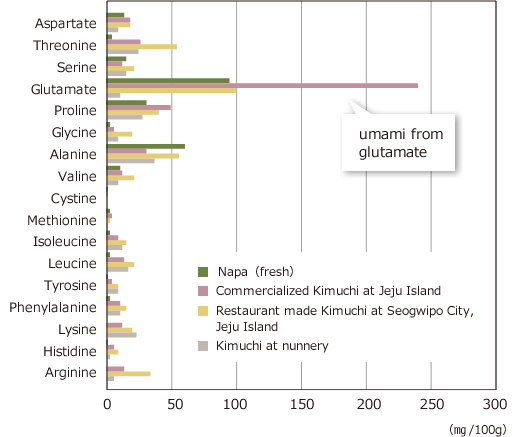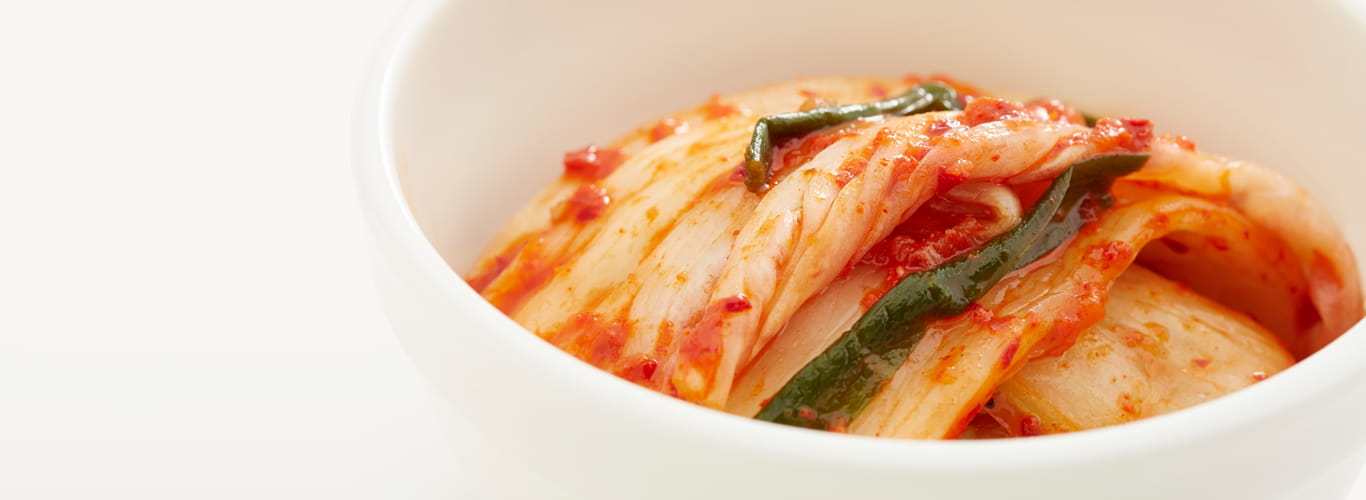Kimchi (also spelled as kimchee) is any one of varieties of traditional Korean pickled dishes with spicy seasonings and is recently enjoying great popularity in the food market around the globe.
The following describes how to make kimchi using napa cabbage (Chinese cabbage), a staple vegetable for kimchi: first, pickle napa with salt; combine ingredients for seasoning such as salted and fermented shrimp
or squid, garlic, ginger, Chinese chive, apple, red hot chili, salt and sugar; fill the combined seasoning between each layer of the napa leaves; leave the seasoned napa in the sealed container more than
overnight.
Now, let’s look into umami in kimchi.
The graph shows a comparison of the amount of amino acids in napa; fresh (green), commercialized kimchi at Jeju Island, Korea (Pink), a restaurant made kimchi using salted and fermented
seafood in seasoning at Seogwipo City, Jeju Island (yellow), and a home-made kimchi without seafood at a Buddhist nunnery in Sangju City, North Gyeongsang Province, Korea (Gray). Among vegetables, napa is
rich in umami: 100g napa contains 94mg of glutamate. In the three varieties of kimchi, glutamate, praline and alanine are prominent among free amino acids. The kimchi at the nunnery in Sangju does not
contain seafood due to Buddhist teachings. The commercialized product at Jeju Island and the kimchi of the restaruant in Seogwipo have more amino acids than fresh napa and kimchi of the nunnery, which imply
that the fermented ingredients in the seasoning have something to do with the result. Thus, napa kimchi is a dish making the most of umami in the vegetable and the fermented products in the seasonings.
(Note: since this analysis does not use the same vegetable as sample, the data of the amount should only be referred as indication.)
Free Amino Acids in Kimchi

| Kimchi |
:Kaneko Kentaro et al., Science of cookery vol.No.1 16-27 1991 |
| Napa |
:Toshiko Kikuchi and others,Domestic Science Department Bulletin, Hiroshima Prefectural Women’s University No.20, 65-77 1984 |




